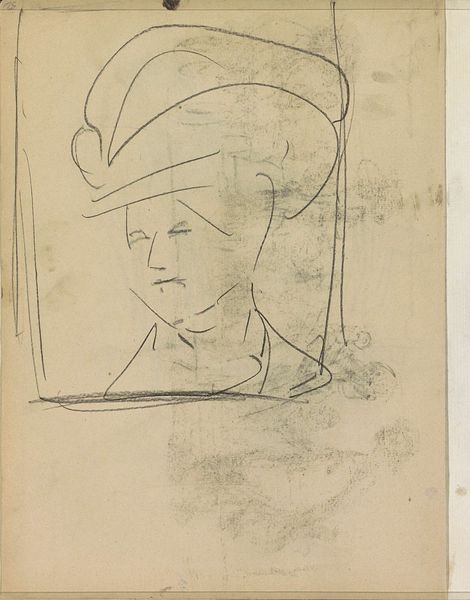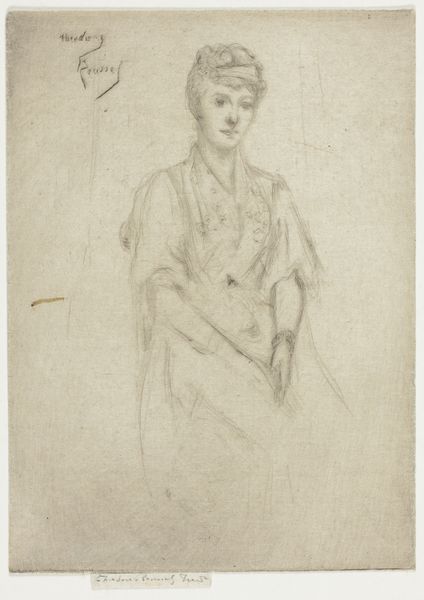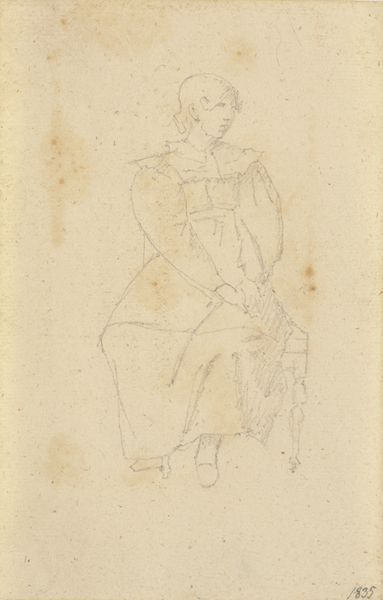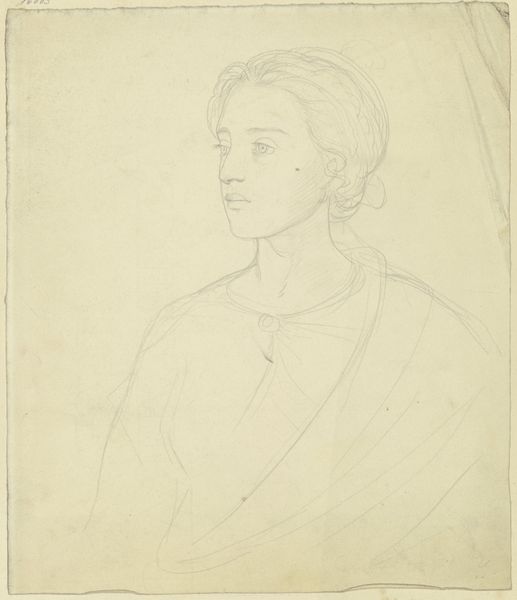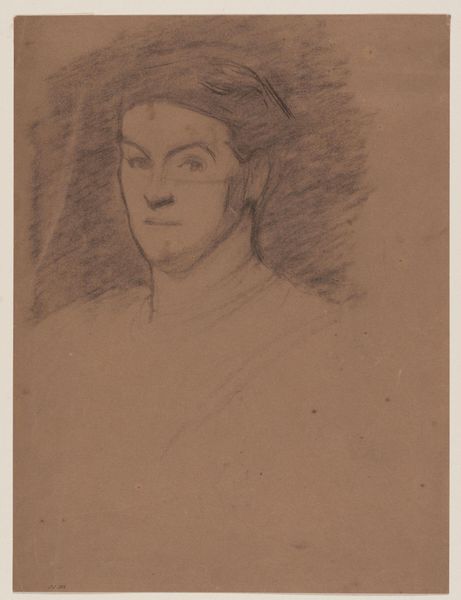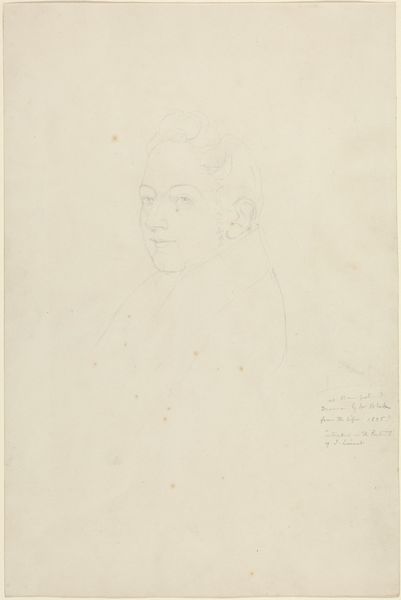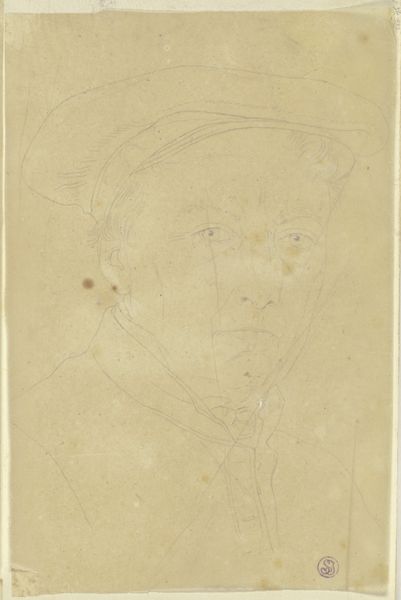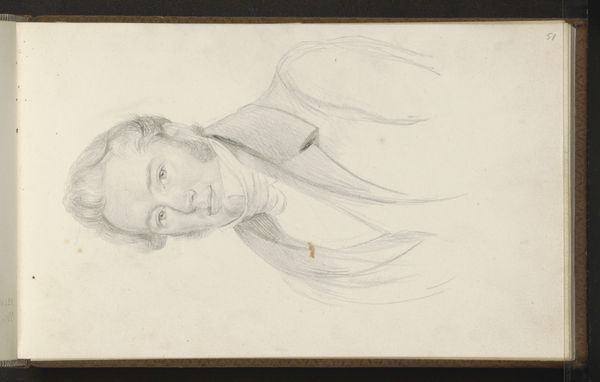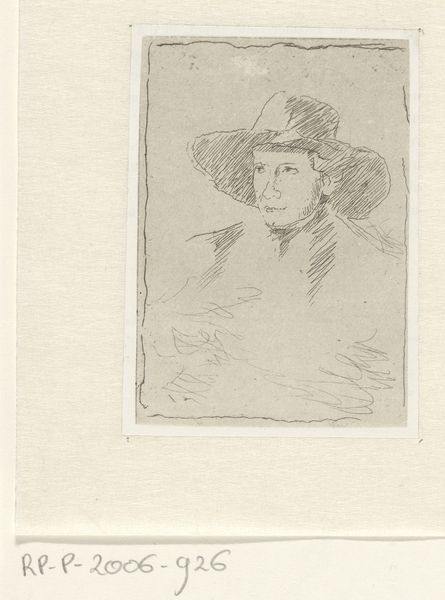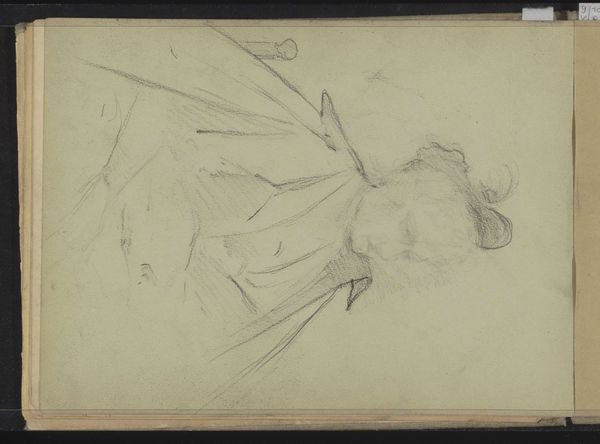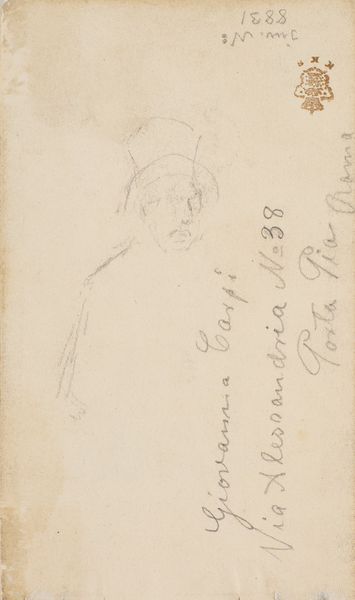
Copyright: Rijks Museum: Open Domain
Curator: It’s a fleeting sketch, really, almost ephemeral. I see the ghost of a woman emerging from the paper. Editor: That’s apt. We’re looking at "Head of a Maid," a pencil drawing by Isaac Israels, likely created between 1886 and 1934. It's part of the Rijksmuseum's collection. Curator: The unfinished quality gives it such an intimate feel. You see the rapid strokes, the pressure of the pencil capturing the woman's likeness. It feels immediate. Does it humanize labor, or exploit it through aesthetic appropriation? Editor: Precisely. Considering the historical context, we must reflect on the power dynamics at play. Israels, as a privileged artist, is capturing the likeness of a working-class woman, likely in service. What was their relationship like? Was she compensated for her time? This brings the discussion back to issues of labor. How is it valued? How does visibility change power dynamics? Curator: And the materials themselves speak volumes. It’s just pencil on paper—accessible, yet capable of capturing such expressive nuance. The unfinished state suggests both urgency and a kind of… deliberate nonchalance. Israels was interested in capturing modern life as it unfolded, in its everyday reality. And those smudges, that chiaroscuro at her torso: are we seeing another unseen maid blurring behind her in line, adding a note of subtle discord? Editor: Yes, and focusing on the materiality, it underscores the ephemerality of labor itself. The pencil marks, susceptible to smudging and fading, mirror the often-unrecognized and undervalued work of domestic servants. We need to engage with feminist and cultural studies perspectives to explore the representation of working-class women in art, pushing boundaries around labor's artistic potential. Curator: Indeed. It invites us to reflect on who gets represented, and how. Ultimately, "Head of a Maid" is more than just a sketch; it's a portal into a complex social landscape. Editor: Agreed. By focusing on its materiality and process, the artwork fosters an opportunity for re-examining socio-economic contexts. And by analyzing Israels’ methods, we uncover questions surrounding class dynamics during the late 19th century in the Netherlands.
Comments
No comments
Be the first to comment and join the conversation on the ultimate creative platform.

